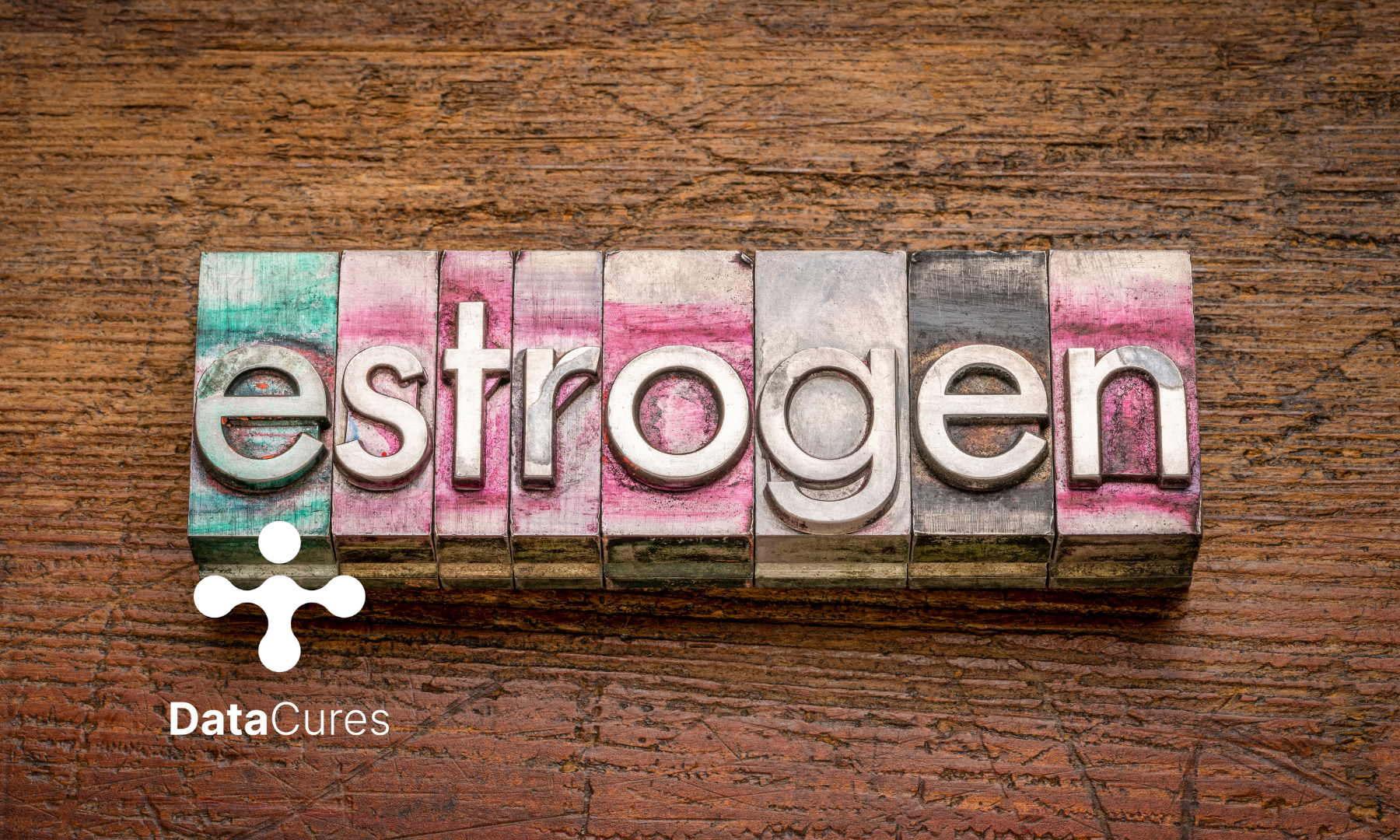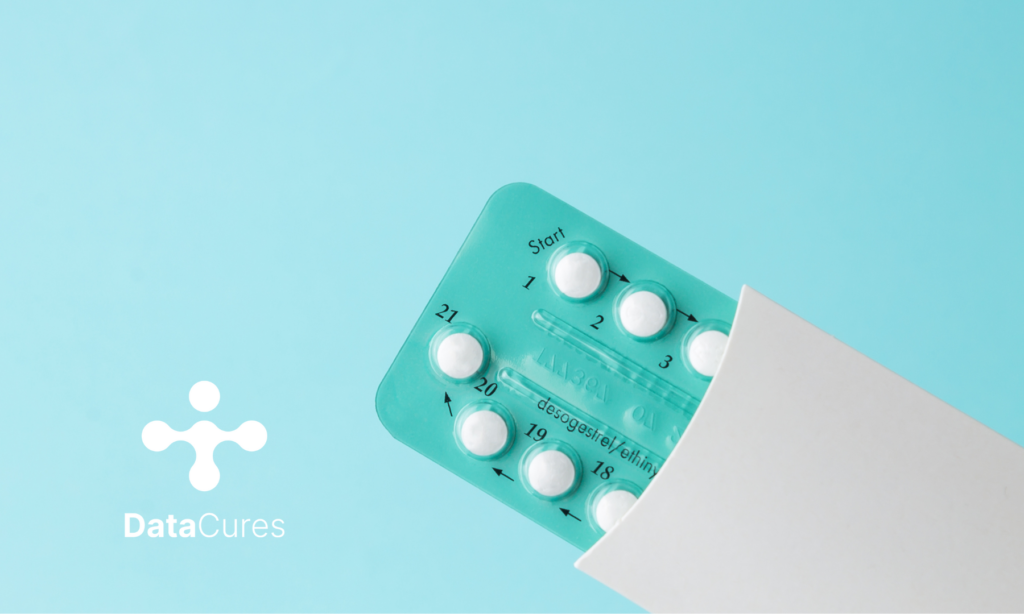

In July, the FDA approved the first over-the-counter (OTC) contraceptive, Opill, a once-daily tablet available online and in grocery, convenience, and drug stores from January 2024. The progestogen-only pill has required physician oversight and a prescription for many years before the FDA’s approval.
It will hopefully encourage more women to choose a safer option for avoiding unwanted pregnancies. Additionally, as it gets more popular, it might contribute to tackling the global issue of rapidly increasing estrogen concentrations in soil and water worldwide. We took the impact of estrogen on our health and environment under scrutiny.
What are progestin-only pills and how do they work?
Progestogen-only contraceptive pills, also known as progestin-only pills or mini-pills, are a type of birth control pill that contain only the hormone progestogen. Unlike combined oral contraceptive pills (which contain both estrogen and progestogen), progestogen-only pills do not contain estrogen.
Beyond making modern contraception more easily accessible, the great news is that it doesn’t contain synthetic estrogens.
What’s wrong with estrogen anyways?
While estrogen hormones are not inherently harmful, and they play essential roles in the female body, there are potential risks associated with estrogen-based hormonal therapies and exposure to other synthetic xenoestrogens.
Therefore these hormones can have positive and negative effects on the body, depending on the situation, dosage and the person.
The function of estrogen
The body can create estrogen hormones, which have essential functions in the woman’s body. The ovaries make most estrogen, although the adrenal glands and fat cells also make small amounts of the hormones.
- Estrogen helps regulate the menstrual cycle and is essential for sexual and reproductive development in females.
- It also helps maintain strong bones by preventing calcium loss, which can help prevent osteoporosis.
- Similarly, estrogen may also help alleviate symptoms of menopause, such as hot flashes and vaginal dryness.
Negative effects:
Synthetic estrogen is created through chemical synthesis rather than produced naturally by the body or derived from plants or fungi.
These substances mimic the function of estrogen and can disrupt its normal operation. Additionally, they can block and bind hormone receptors. This alters the way hormones signal and communicate with other tissues. Eventually, it impacts bone growth, blood clotting, and reproductive health.
When the body stops producing estrogen, hormone replacement therapy can be used to treat menopause symptoms. While estrogen therapy is primarily used to treat symptoms of menopause, it can also be used to treat other conditions that involve estrogen deficiency. These conditions include osteoporosis, certain types of breast cancer and premature ovarian failure.
Estrogen is, of course, also used in combination with progestin as a form of contraception. Combined hormonal birth control methods, such as the birth control pill, patch, and ring, release both estrogen and progestin into the body to prevent pregnancy.
The side effects of administering synthetic estrogen hormones are wide-ranging.
- Estrogen can cause side effects such as breast tenderness, nausea, vomiting, bloating, stomach cramps, headaches, weight gain, hyperpigmentation of the skin, hair loss, vaginal itching, and abnormal uterine bleeding.
- It can increase the risk of more severe side effects such as hypertension, cerebrovascular accident, myocardial infarction, venous thromboembolism, pulmonary embolism, exacerbation of epilepsy, irritability, exacerbation of asthma, galactorrhea and nipple discharge, hypocalcemia, gallbladder disease, hepatic hemangioma and adenoma, pancreatitis, breast hypertrophy, endometrial hyperplasia, vaginitis, vulvovaginal candidiasis, enlargement of uterine fibroids, and risk of cervical cancer.
(Try to say that with one breath!)
Finally, estrogen can also increase the risk of heart attack, stroke, breast cancer, and blood clots in the lungs and legs.
This is only the tip of the iceberg (and I don’t say this with excitement).
Unintended exposure to synthetic estrogens
You might say, I don’t take combined contraceptives, I’m not on hormone replacement therapy, so I can’t possibly be exposed to excess estrogens. Sadly, whoever lives on our planet has to bear the consequences of our modern life, agriculture and industrial activities. That also means exposure to pollutant levels of estrogen.

So what are the most common sources of xenoestrogens that land in our waters and soil?
- Agricultural sources: Pesticides and fungicides used in agriculture are significant sources of xenoestrogens in water systems. Livestock farming is also a potential source of estrogenic contamination in nearby streams, as dairy cow manure applied to pastures can release significant amounts of estrogenic compounds.
- Industrial sources: Industrial discharges can introduce xenoestrogens into water systems, including rivers, lakes, and oceans. Industrial chemicals such as bisphenol A (BPA) and phthalates are known to have estrogenic activity and can be found in various consumer products, such as cosmetics containing parabens.
- Pharmaceutical sources: Pharmaceuticals, including oral contraceptives and hormone replacement therapy, can introduce synthetic estrogens into water systems. Sunscreens and other personal care products that contain estrogenic compounds (like Benzophenone-3) can also contribute to the contamination.
Xenoestrogen Exposure and its global effects
Xenoestrogens are not biodegradable and remain in the body for prolonged periods. They are most commonly stored within fat tissue. Over time they alter hormone levels and contribute to an increase in the body’s overall estrogen levels. While additionally affecting the normal behaviour of natural estrogen.
Excess estrogen prevalence in soil and water can also have long-term effects on the global population. Estrogen is an endocrine-disrupting chemical (EDC) that can pose serious threats to soil, plants, animals, and humans. We examined three areas where the impact of estrogen is unsettling.
Human health risks
Estrogens at pollutant levels can lead to serious health risks, such as an increased risk of breast cancer in women and prostate cancer in men.
Endometriosis is a complex disease that affects about 10% (190 million) of reproductive-age women and girls globally. The primary causes of the condition are not clinically established, but xenoestrogen is thought to play a role in increasing the inflammation, growth and pain associated with the disease. Estrogen dominance in the female body may also contribute to the onset of endometriosis and its growth.
Environmental impact
Estrogens have received significant attention in recent years because of their rapidly increasing concentrations in soil and water worldwide. They have been identified as potential environmental pollutants with adverse effects on various organisms and ecosystems.
Fish population: A study documented the collapse of a fish population after exposure to synthetic estrogen. Chronic exposure to synthetic estrogens led to the feminization of males, altered oogenesis (the formation and development of an ovum) in females, and, ultimately, led to a near extinction of the observed species from the lake.
These hormones in our freshwaters can substantially impact the sustainability of wild fish populations, which is quite an issue since nearly 80% of the world’s fisheries are already fully exploited, over-exploited, depleted, or in a state of collapse. Beyond the fish population, it can affect reproductive development in both domestic and wild animals.
Can data science help the global issue?
Data science and advanced analytics methods can be used to fight the impact of estrogen and its high prevalence in soil and water. While there is no international guidance on the matter, more and more countries use data to control the impact of estrogen. Here are some examples.
Data collection and monitoring: Implementing a comprehensive data collection and monitoring system to track estrogen levels in soil and water sources. This can involve regular sampling and analysis of water and soil samples from various locations to identify areas with high estrogen prevalence.
Data analysis and modelling: Utilize data analysis techniques and modelling to identify patterns, trends, and potential sources of estrogen contamination. This can involve statistical analysis, machine learning algorithms, and predictive modelling to understand the factors contributing to estrogen prevalence.
Identifying pollution sources: Data science can help identify the major sources of estrogen contamination in soil and water. Analyzing data on agricultural practices, industrial discharges, and wastewater treatment makes it possible to pinpoint the key contributors to estrogen prevalence.
Risk assessment and mitigation: Data science can assist in assessing the potential risks associated with high estrogen prevalence and developing strategies for mitigation. By analyzing the relationship between estrogen levels and environmental impacts, it is possible to prioritize areas for intervention and implement targeted measures to reduce estrogen contamination.
Decision support systems: Develop systems that utilize data science techniques to provide real-time information and recommendations for managing estrogen prevalence. This can help policymakers, farmers, and other stakeholders make informed decisions to minimize contamination.
Naturally, data science alone cannot solve the issue of high estrogen prevalence globally. It should be complemented by regulatory measures, sustainable agricultural practices, and wastewater treatment strategies to effectively mitigate estrogen contamination and protect the environment and human health.
Excess estrogen prevalence in soil and water can have significant long-term effects on the global population, including reproductive health risks, environmental impact, and human health risks. Monitoring and regulating estrogen levels in soil and water is important to minimize these risks and reduce synthetic hormones’ unintended and overall consumption. Regulations are also necessary, along with adequate education to mitigate the impact of estrogen.
The existing dangers related to chemical substances, like estrogens, should be common knowledge. Increasing awareness in society can lead to a reduction in environmental pollution.
As an individual, you can make better choices by using estrogen-free cosmetics, contraception alternatives and food sourced from organic farming.
Ready to take your health data and analytics skills to the next level? Subscribe to our newsletter for insider tips, top resources, and upcoming industry events. Sign up for our newsletter here.

